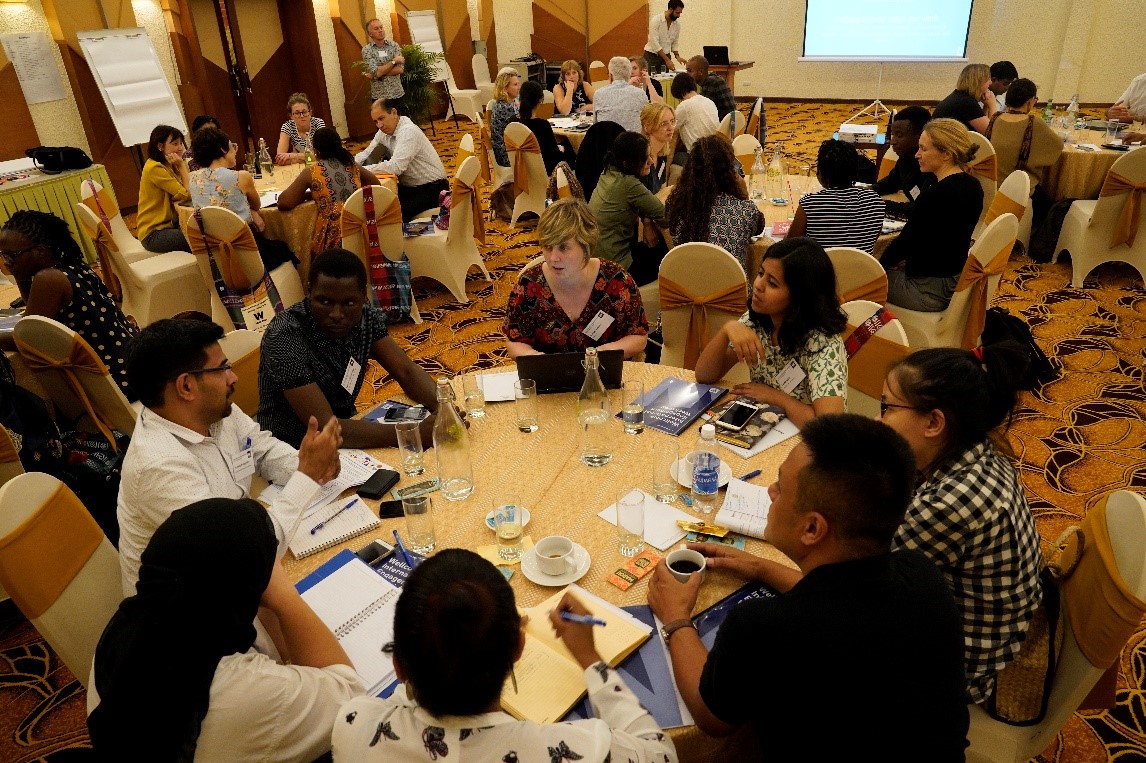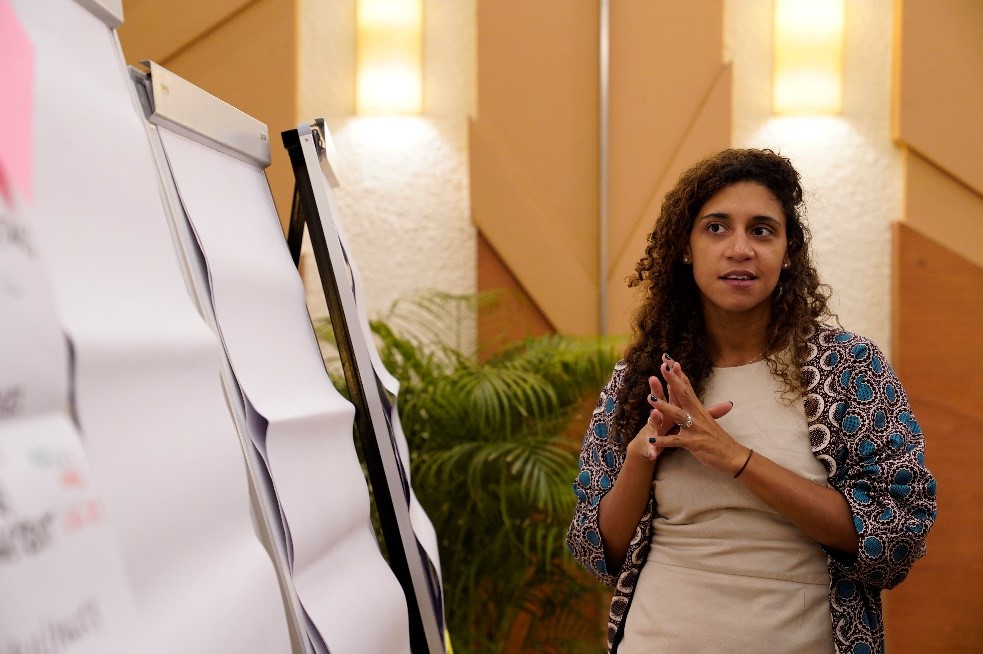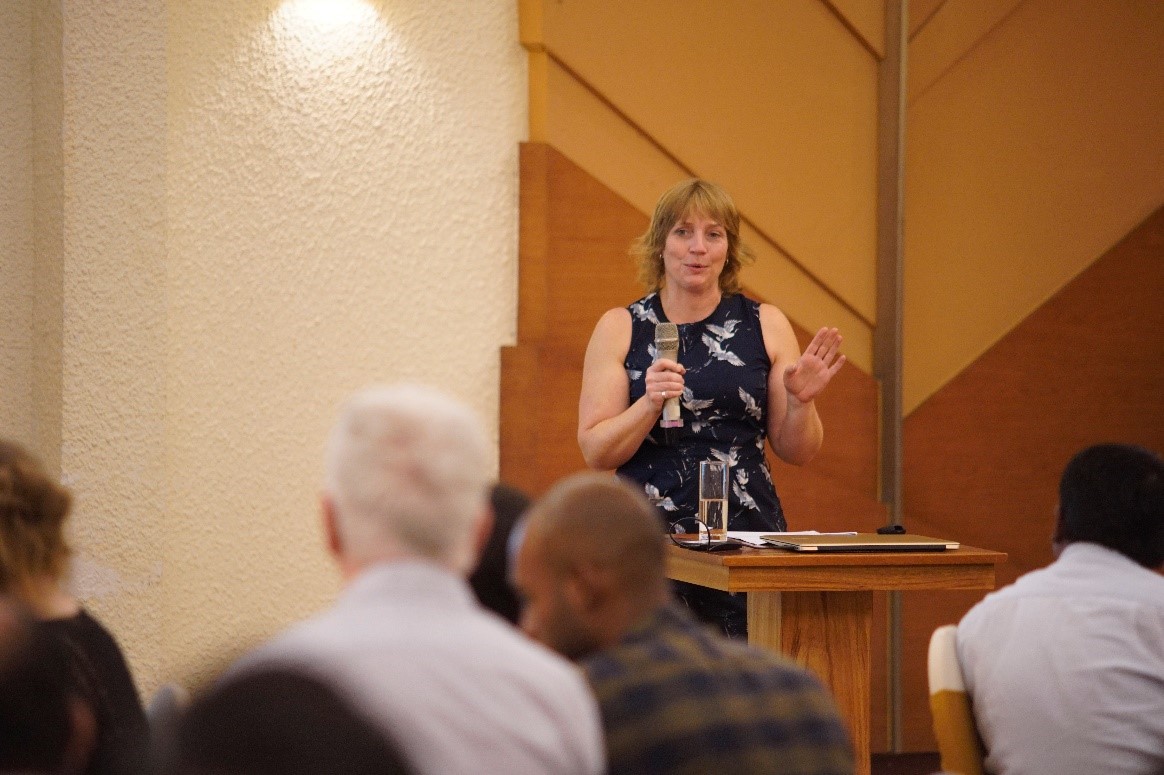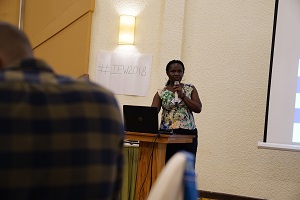Leadership in the field of community and public engagement (CPE) was a key aspect of discussions at the 2018 Wellcome International Engagement Workshop. Several of the sessions aimed to explore leadership: what it means to be a leader in public and community engagement, what characteristics a leader should have, and what the field requires from its leaders. Talks from CPE leaders, Lillian Mutengu and Bella Starling, featured alongside group discussion sessions to provide participants with the opportunity to reflect on what they felt the role of a leader in CPE should be.

Image: Participants at the workshop | Minh Tan
During the workshop, participants split into working groups to discuss the question ‘what is leadership?’. Across the groups, a number of elements or characteristics which are important in good leadership were proposed:
Inspiring and influencing others
To be a great leader you need to be able to visualise the change that is possible, communicate that vision effectively, then facilitate actions and actors needed to create that change. This should involve stepping outside of the traditional paradigm of ‘institution telling community’ and moving towards facilitating a two-way conversation. Leaders should also work to influence and motivate others to understand the intrinsic and instrumental value of CPE, rather than just ‘scaring’ them into including it by threatening loss of funding or scoring poorly on an assessment criteria, for example – although this can be useful to get engagement on the agenda in the first place.
Practising inclusivity
It is vital to appreciate that people can be leaders within different spheres of influence, and that they can all contribute to the common goal. Leadership operates at various levels, from grassroots to senior leadership, and each level is equally valuable and necessary. We must make space for this diversity in our ideas of what constitutes leadership. Another key leadership quality is being able to listen to and empathise with others, but then when necessary being able to step back and make a decision, having taken multiple perspectives into account. To facilitate these contributions from all spheres, leaders must also ensure that the language being used is shared, clear and inclusive to all.
Ensuring sustainability
CPE leaders must ensure projects and their impacts are sustainable in the long term. By investing in people, we can enable and nurture ‘bottom up’ leadership within communities. To achieve this, community leaders must demand accountability, express empathy, communicate well, and advocate for community interests. Leaders from other institutions must work with the community leaders to ensure they are empowered to do this.
A key aspect of ensuring sustainability is assessment. Good leaders must be self-critical and always open to assessing impacts and outcomes throughout projects and schemes. They must recognise areas where the team needs support, and be resourceful and flexible to bring in external help if necessary. Exit strategies must be planned to ensure projects come to an end effectively and without causing any damage to the community.

Image: A workshop participant | Minh Tan
Behaving authentically
Leaders must lead by example, developing leadership inclusively and co-creatively. This also includes knowing when to step back and always working with the community’s interests at heart. Leaders must also have the humility to accept failure and persevere when things go wrong.
These group discussions also created a number of questions:
- What are the differences between individual and organisational leadership? For example, what is the role of an organisation such as Wellcome as a funder, compared to leaders in institutions such as universities, and community leaders?
- Is the aim of a leader to drive the agenda forwards, or to improve practice, or to shift the paradigm? Or all of these things? Or something else?
- In reality, what challenges do CPE professionals face in practicing these great leadership behaviours? How can they be overcome?
- How can we develop a strong body of evidence to persuade others of the value of CPE?
Alongside these discussions delegates heard from two keynote speakers on the role of leadership. Click on the pictures below to watch their presentations and read about their work.
|
Bella Starling: Leadership and embedding engagement in research |
Lillian Mutengu: Leadership and embedding engagement in research |
|
|
---
The content on this page forms part of the online report for the 2018 International Engagement Workshop “Taking it to the Next Level: How can we generate leadership and develop practice in engagement?". To learn more about the workshop, access the rest of the report and browse the video presentations, discussion summaries, and tools, visit the workshop page.

This work is licensed under a Creative Commons Attribution 4.0 International License.


